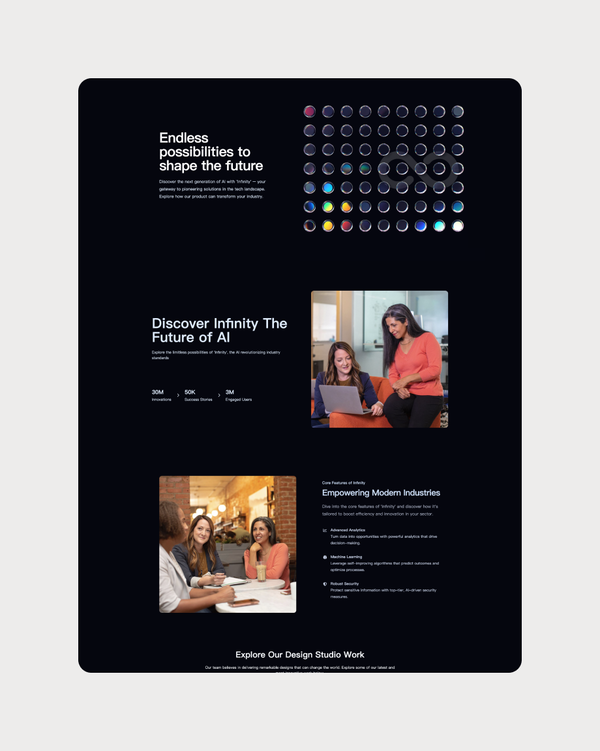Getting Started with Website Builder for Small Business
Website Builder for Small Business Tips and Tricks
Website Builder for Small Business
In today’s digital age, having a strong online presence is crucial for businesses of all sizes. One of the simplest and most effective ways to establish an online presence is by building a one pager website. A one pager website is a single webpage that provides all the necessary information about your business, products, or services in a concise and visually appealing manner. In this article, we will discuss the benefits of having a one pager website and provide a step-by-step guide on how to build one.

Website Builder for Small Business FAQ
Website Builder for Small Business
One of the most popular free site builders for artists is WordPress. WordPress is a versatile platform that is used by millions of websites around the world. It offers a range of customizable templates and themes that can be easily tailored to suit the needs of any artist. Whether you are a painter, photographer, sculptor, or any other type of visual artist, WordPress provides the tools you need to create a stunning online portfolio.
WordPress is known for its user-friendly interface, making it easy for even the least tech-savvy artists to build and maintain their website. The platform also offers a wide range of plugins that allow you to add features such as image galleries, contact forms, and social media integration. With WordPress, you can create a professional-looking website that showcases your work in the best possible light.
Another free site builder option for artists is Wix. Wix is a drag-and-drop website builder that is perfect for artists who want to create a visually stunning website without needing to know how to code. Wix offers a range of customizable templates that can be easily customized to suit your artistic style. Whether you are looking to create a simple portfolio website or a more complex online gallery, Wix provides the tools and resources you need to bring your vision to life.
Wix also offers a number of features specifically designed for artists, such as a built-in image editor that allows you to easily crop, resize, and enhance your images. The platform also offers integration with popular social media platforms, making it easy to share your work with a wider audience. With Wix, you can create a professional website that showcases your artwork and helps you connect with potential buyers and fans.
Squarespace is another popular free site builder option for artists. Squarespace offers a range of professionally designed templates that are perfect for showcasing visual artwork. Whether you are a photographer, illustrator, or designer, Squarespace provides the tools you need to create a beautiful and functional website. The platform also offers a range of features, such as built-in e-commerce capabilities, that make it easy to sell your work directly from your site.
Squarespace is known for its clean and modern design aesthetic, making it a great choice for artists who want to create a stylish and sophisticated online presence. The platform also offers a range of customization options, allowing you to tailor your website to suit your unique style and brand. With Squarespace, you can create a professional website that showcases your artwork in the best possible light.
What is SEO?
SEO is the process of optimizing your website in order to improve its visibility in search engine results. By using relevant keywords and creating high-quality content, you can increase your website’s ranking in search engine results pages (SERPs). This, in turn, can drive more organic traffic to your website, leading to more leads and conversions.
Types of SEO
There are three main types of SEO: on-page, off-page, and technical. On-page SEO involves optimizing your website’s content and structure, including keyword research, meta tags, and internal linking. Off-page SEO refers to strategies used to promote your website outside of your own website, such as backlinking and social media marketing. Technical SEO involves optimizing your website’s backend, including site speed, mobile-friendliness, and crawlability.
Keyword Research
Keywords are the foundation of any successful SEO strategy. By researching and targeting the right keywords, you can attract the right audience to your website. Start by using keyword research tools such as Google Keyword Planner or SEMrush to find relevant keywords with high search volume and low competition. Once you have a list of keywords, incorporate them into your website’s content, meta tags, and URLs.
Content Creation
Content is king when it comes to SEO. High-quality, relevant content can drive traffic to your website and improve your search engine ranking. Create engaging blog posts, articles, and videos that provide value to your target audience. Use your targeted keywords strategically throughout your content, but avoid keyword stuffing, as this can negatively impact your SEO efforts.
On-Page Optimization
On-page optimization involves optimizing your website’s content and structure to improve its visibility in search engine results. Use relevant keywords in your meta tags, headings, and content. Create unique, descriptive meta titles and meta descriptions for each page on your website. Improve your website’s user experience by optimizing its loading speed, mobile-friendliness, and navigation.
Off-Page Optimization
Off-page optimization involves promoting your website outside of your own website to improve its authority and credibility. Build backlinks from reputable websites in your industry by guest posting, submitting your website to online directories, and participating in forums and communities. Use social media to share your content and engage with your audience.
Technical SEO
Technical SEO involves optimizing your website’s backend to improve its crawlability and indexing by search engines. Improve your website’s loading speed by minifying CSS and JavaScript files, compressing images, and enabling browser caching. Make sure your website is mobile-friendly and responsive, as Google gives preference to mobile-friendly websites in search results. Create a sitemap and submit it to search engines to help them find and index your website’s pages.
Monitoring and Analysis
Once you have implemented your SEO strategies, it’s important to monitor and analyze their performance. Use tools like Google Analytics and Google Search Console to track your website’s traffic, keywords, and ranking in search engine results. Analyze your data regularly to identify trends, optimize your strategies, and improve your website’s performance.

The Ultimate Guide to Website Builder for Small Business
Website Builder for Small Business
In today’s digital age, having a visually appealing and user-friendly website is crucial for the success of any business. A well-designed website can help attract new customers, build credibility, and increase conversion rates. However, designing a website is not as simple as it may seem. It requires a strategic and systematic approach to ensure that the final product meets the needs and expectations of both the business and its target audience. In this article, we will discuss the website design process in detail, outlining the key steps involved in creating a successful website.
Step 1: Define the Purpose and Goals
The first step in the website design process is to clearly define the purpose and goals of the website. This involves identifying the target audience, understanding their needs and preferences, and determining the desired outcomes for the website. For example, is the website meant to generate leads, drive sales, provide information, or showcase products and services? By having a clear understanding of the purpose and goals of the website, you can better tailor the design and content to meet these objectives.
Step 2: Conduct Research
Once the purpose and goals of the website have been defined, the next step is to conduct research. This involves analyzing the competition, researching industry trends, and gathering insights into the preferences and behaviors of the target audience. By conducting thorough research, you can gain a better understanding of what works and what doesn’t in your industry, helping you make informed design decisions.
Step 3: Create a Wireframe
After conducting research, the next step in the website design process is to create a wireframe. A wireframe is a visual representation of the layout and structure of the website, showing the placement of various elements such as navigation menus, headers, footers, and content sections. Creating a wireframe allows you to plan the overall design and functionality of the website before moving on to the visual design phase.
Step 4: Design the Visual Elements
Once the wireframe has been finalized, the next step is to design the visual elements of the website. This involves creating a visually appealing and consistent design that reflects the brand identity and resonates with the target audience. Elements such as color scheme, typography, imagery, and layout are carefully considered to create a cohesive and attractive design that conveys the desired message and engages users.
Step 5: Develop the Website
After the visual design has been approved, the next step is to develop the website. This involves coding the design into a functioning website using HTML, CSS, and other programming languages. During the development phase, the website is tested for functionality, responsiveness, and compatibility across different devices and browsers to ensure a seamless user experience.
Step 6: Test and Optimize
Once the website has been developed, it is essential to test and optimize its performance. This involves conducting usability tests to identify any usability issues, testing load times to ensure fast page speeds, and optimizing the website for search engines to improve visibility and accessibility. By testing and optimizing the website, you can ensure that it meets the needs and expectations of users, leading to better engagement and conversions.
Step 7: Launch and Monitor
The final step in the website design process is to launch the website and monitor its performance. This involves deploying the website to a live server, promoting it to the target audience, and tracking key metrics such as traffic, engagement, and conversions. By monitoring the performance of the website, you can identify areas for improvement and make informed decisions to optimize its effectiveness over time.

